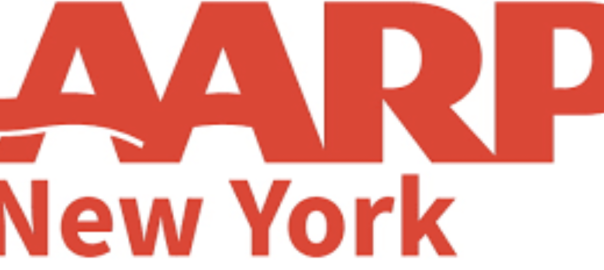
Expanding NY’s Earned Income Tax Credit Would Benefit 72K+ Older Low-Wage Workers: Report
With Many 65+ NYers Still Working, Expansion Would Also Write Age Discrimination Out of State Law
ALBANY, N.Y. – New York State must end age discrimination that’s written right into state law by expanding its Earned Income Tax Credit (EITC), a popular federal program credited with lifting millions of Americans out of poverty, to include the increasing number of older, low-wage New Yorkers still in the workforce, AARP New York said today as it released a new report showing how an expanded EITC would benefit more than 72,000 New Yorkers age 65 and older.
In 2021, the American Rescue Plan (ARP) temporarily expanded the federal EITC to include workers older than 64, providing a needed income boost to workers and families struggling to pay for basic needs during the pandemic. But the inclusion of workers 65 and above ended last year.
Currently, low-income workers 65 and older receive no benefit from the federal or New York State’s EITC. That’s an “outdated socioeconomic and policy environment” because an increasing number of older New Yorkers are still working, and that group accounts for the largest share of future growth in the state’s labor market, according to the AARP New York-sponsored report conducted by the Schwartz Center for Economic Policy Analysis at The New School.
“Older workers make up an increasing share of the labor market and are more likely to be working poor than their prime-age counterparts,” according to the report’s authors, economic policy researcher Aida Farmand and Professor Teresa Ghilarducci, director of the Schwartz Center. “More than 72,00 childless New Yorkers over age 64 would become eligible were policymakers to remove the age cap for New York’s EITC.
“Without a permanent EITC expansion that ends age restrictions, an increasing share of the population will be unable to access this key cash assistance program.”
Removing the age limit to include workers over 64 could add up to between $44 million and $80 million in additional economic activity per year, the report found.
Expanding the EITC eligibility to people 65 and older would especially benefit women and workers of color, “who represent a considerable share of the older workers in low paid jobs,” the report said. Under the ARP expansion enacted in 2021, 55% of older beneficiaries were women and more than 22% were non-white.
“Arbitrarily keeping older workers from benefitting from the EITC once they turn 65 even as they continue to work is government-approved age discrimination, plain and simple,” said AARP New York State Director Beth Finkel. “Perpetuating this discrimination as more New Yorkers remain in the workplace into their late sixties and beyond adds injury to insult. This program has proven to help millions of Americans work their way out of poverty, and it has to be expanded for those low-wage workers 65 and older. This would provide a needed financial boost for low-income workers by putting more money directly in their pockets. That’s why we’re urging the State Legislature and Governor Hochul to work together during the 2024 legislative session to lift the age cap on the EITC.”
“Tens of thousands of older low-income New Yorkers would see significant benefits from a state expansion of its EITC program,” said Aida Farmand, the report’s co-author. “Other states have removed their EITC age cap to assist their older workers. New York needs to join those states and do the same to give workers 65 and older a financial boost in the final years of their working careers.”
“Simply put, when you incentivize and reward work, it boosts our state and local economy, and with more and more older New Yorkers entering the workforce, modernizing and expanding our EITC only makes sense,” said Assembly Member Patricia Fahy, who has sponsored legislation that would expand the EITC to eliminate the age cap. “We need to pass my legislation expanding New York’s EITC, remove the age cap, and support New York’s older population still active in the workforce with this vital lifeline.”
“For more than a century, the New York Urban League has strived to better the working lives of African American New Yorkers through training and education,” said Arva Rice, President and CEO of the New York Urban League. “Expanding the EITC in New York to include workers 65 and older will help offset low wages paid to so many people of color who are struggling to make ends meet even as they continue to work beyond the traditional retirement age or are forced to re-enter the workforce because of personal financial stresses.”
“Every worker must have equal opportunity to achieve financial security,” said Hazel N. Dukes, president of the NAACP New York State Conference. “Expanding New York State’s EITC to include low-wage workers older than 64 would be a major step toward stabilizing the financial well-being of older working New Yorkers of color who continue to be such a vital segment of the state’s workforce across a wide array of businesses.”
“For many Latino and senior New Yorkers, the Earned Income Tax Credit is the difference between food on their plates and financial ruin. But in New York State, the EITC has a flaw, it cuts off at 65, depriving older New Yorkers of much needed income and tax relief. Our seniors deserve better,” said Frankie Miranda, President and CEO of Hispanic Federation. “Fellow Latinos and older workers are able to pay for everyday expenses such as medical bills, rent, and food because of the EITC, especially during tough economic times. This is why we urge the State to extend the ETIC cut-off age. It’s the right thing to do.”
Follow us on X: @AARPNY and Facebook: AARP New York
About AARP
AARP is the nation’s largest nonprofit, nonpartisan organization dedicated to empowering Americans 50 and older to choose how they live as they age. With a nationwide presence, AARP strengthens communities and advocates for what matters most to the more than 100 million Americans 50-plus and their families: health security, financial stability and personal fulfillment. AARP also works for individuals in the marketplace by sparking new solutions and allowing carefully chosen, high-quality products and services to carry the AARP name. As a trusted source for news and information, AARP produces the nation’s largest circulation publications, AARP The Magazine and AARP Bulletin. To learn more, visit www.aarp.org/about-aarp/, www.aarp.org/españo or follow @AARP, @AARPenEspañol and @AARPadvocates on social media.

